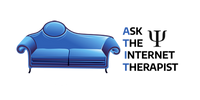Attention Deficit Disorder and ADD-care®, The Natural Alternative! There is never a Reason to be Without a Prefrontal Cortex, explains the causes, symptoms, and complex dynamics of ADD and ADHD and dispels many of the common myths of attention deficit disorder. It shows the research done at the Amen Clinic by Jef Gazley, M.S., LMFT with ADD patients and introduces ADD-care®, a natural alternative to the stimulants. This digital book also demonstrates the Six Types of ADD and how to treat each of them. This excellent ebook will help you to find a solution for your ADD or ADHD symptoms. The following is an excerpt from this ebook: “People with inattentive attention deficit disorder often make careless mistakes and give poor attention to detail. It is almost as if they rush through a test and then look back at an answer that they knew but missed because of their haste. They are often forgetful of little things. They often appear tired or sluggish. They also complain of feeling bored, being bored, or other people view them as bored. Inattentive ADD looks exactly like hyperactive ADD on a SPECT scan. The blood and electricity has drained out of the prefrontal cortex which leaves the two characteristic dark areas where the brain is essentially asleep. Treatment for inattentive ADD is the same as the hyperactive type and would include either a stimulant or ADD-care®. Dr. Amen has identified four additional and distinct types of ADD. Most clinicians are not aware of these or disagree with the idea that they are separate types of attention deficit disorder. However, Dr. Amen is the worldwide leader in the field. Dr. Hallowell, who is the second most prominent doctor in the field of ADD views these categories as valid types of ADD, but describes them as ADD plus another disorder such as depression or anxiety. Dr. Amen identifies the third type of ADD as Over-Focused ADD, while Dr. Hallowell would see this category as ADD and OCD. On a SPECT scan this condition shows the characteristic depletion on the surface scan of the prefrontal cortex. However, on the internal SPECT scan, the white, red, or yellow colors mean that the brain is working 15% hotter than it should be. The only exception to this is in the bottom part of the brain or cerebellum. This part should be white, red, or yellow which denotes a sufficient amount of dopamine, an energizing neurotransmitter.”



